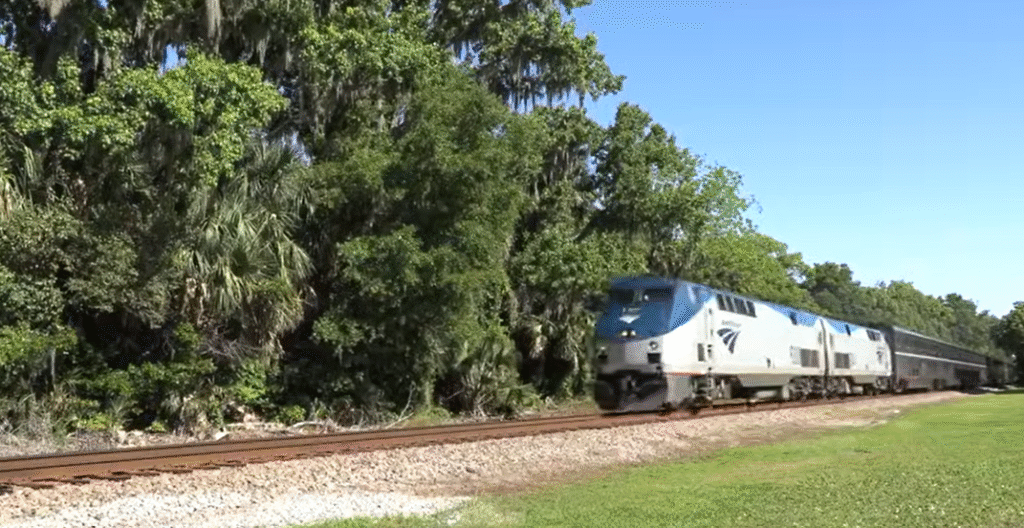Both reassurance and contemplation have been generated by Amtrak’s continued operation during the 2025 government shutdown. No immediate disruptions were observed by passengers boarding trains from New York to Chicago, a pattern remarkably similar to previous shutdowns when the federally chartered rail service was able to survive on reserve funds and ticket sales. Amtrak’s independence provides it with exceptional stability in times of political unrest, in contrast to airports where unpaid federal employees have slowed screenings and control towers.
Amtrak’s operational independence is especially helpful during times of budget paralysis, according to railway experts. Despite being owned by the government, the corporation manages its daily operations as a self-sufficient business. Trains continue to run on time, ticket booths are manned, and travelers are met with the well-known cadence of departures and arrivals—a striking reminder that not every federal failure equates to a national paralysis.
However, there is a more fragile reality underneath this serene exterior. Amtrak’s capital project funding is among the new federal disbursements that are frozen due to the government shutdown. These appropriations are critical to long-distance route improvements, track modernization, and infrastructure upgrades. If the shutdown continues, long-term projects like the Northeast Corridor upgrades may stall and maintenance cycles may be noticeably shortened. Months later, such delays might eventually affect travel plans.
Table: Amtrak – Basic Profile
| Item | Information |
|---|---|
| Company Name | Amtrak (National Railroad Passenger Corporation) |
| Nature | Federally chartered corporation operating U.S. intercity passenger rail service |
| Funding | Mix of ticket revenue, commercial earnings, and federal appropriations |
| Current Issue | Government shutdown and potential impact on infrastructure and operations |
| Service Commitment | Daily passenger train service across numerous corridors in the U.S. |
| Authoritative Website | https://www.amtrak.com |

Amtrak’s current state appears to be remarkably successful at ensuring service continuity when compared to previous shutdowns. Amtrak ran without interruption during a 35-day shutdown in 2019, although station repair programs experienced delays. This time, observers of the rail sector anticipate a remarkably similar pattern. Essential travel is unaffected, but strategic advancements like electrification, high-speed initiatives, and new stations are temporarily halted by uncertainty.
This continuity is consoling and symbolic to the passengers. When public infrastructure is built with layered funding mechanisms, it can withstand administrative chaos like trains. This is in stark contrast to the aviation industry, where even short-term lapses in federal oversight lead to a chain reaction of cancellations. In a particularly creative display of structural foresight, Amtrak engineers continue to work uninterrupted while TSA employees and air traffic controllers endure unpaid weeks.
Amtrak’s tenacity does have its limits, though. The company maintains unprofitable long-distance routes connecting smaller towns by relying on an annual federal subsidy. These areas may experience less maintenance and delayed repairs if the funding lapse persists, which is worrisome for communities that rely nearly entirely on passenger rail for intercity travel. For towns anchored along the rail corridor, that delay could mean logistical setbacks or a delayed recovery in tourism.
According to travel experts, Amtrak’s continued dependability has significantly improved public perception. As airlines struggle, social media has seen a spike in posts complimenting the company’s consistency. It’s a small but significant change that shows how a brand’s consistency can influence trust in the face of national upheaval. In the midst of the wider chaos, Amtrak’s ability to provide steady continuity feels almost revolutionary to frequent travelers.
Amtrak’s perseverance demonstrates how autonomous financial structures can protect services that interact with the public in the larger transportation ecosystem. It protects itself from political unrest by utilizing revenue diversification through partnerships, ticket sales, and real estate leasing. This flexibility was thoughtfully designed following decades of reform, making Amtrak a highly adaptable model for semi-public transportation organizations.
However, realism must be used to temper optimism. Funding must be consistent for infrastructure upgrades, such as new tracks and digital systems. Long-term funding freezes, according to rail unions, could impede modernization, raise maintenance costs, and undo the gains made possible by recent federal grants. Their opinions are in line with those of public transport supporters who believe that Amtrak’s future serves as a gauge of how much political stability can be relied upon by the nation’s infrastructure.
The message for passengers is simple but incredibly comforting: Amtrak trains are still operating, tickets are still available, and schedules are still in place. The rail service is still incredibly dependable despite the long lines and delays at the country’s airports. It still links cities, boosts tourism, and provides a vital substitute for passengers tired of air delays.

